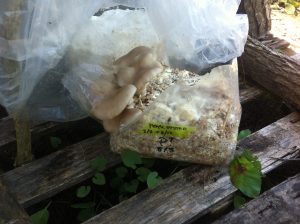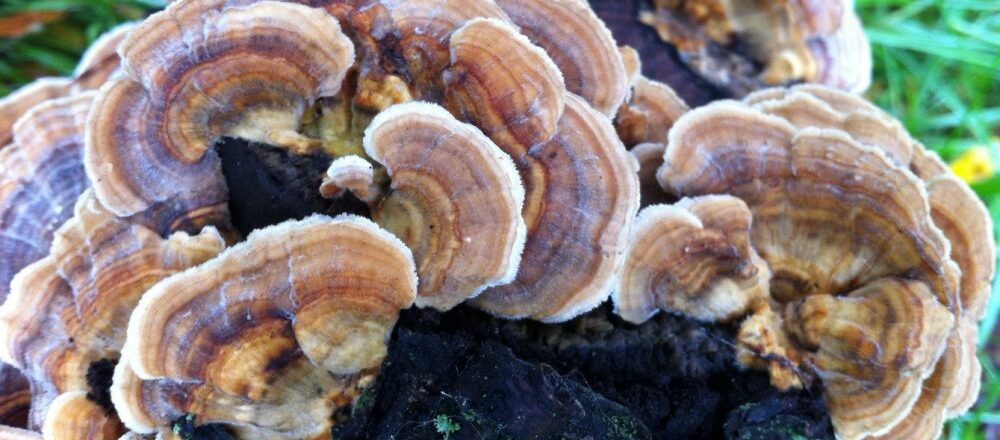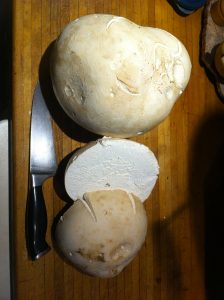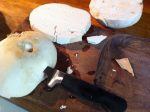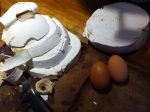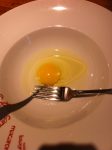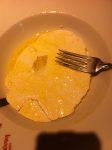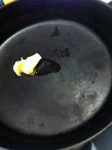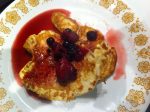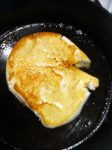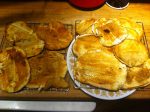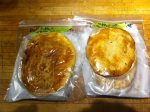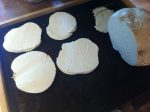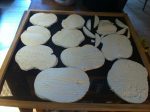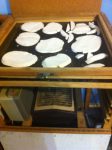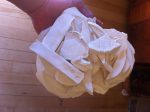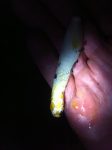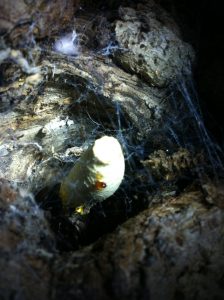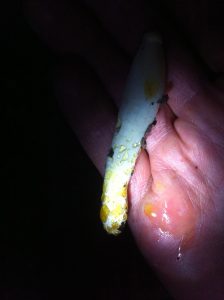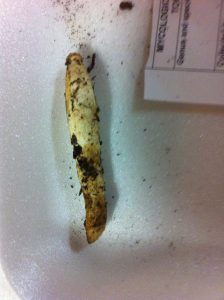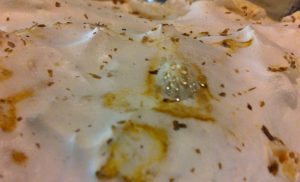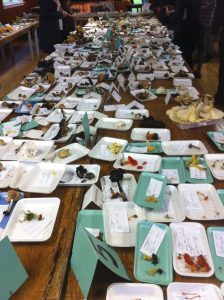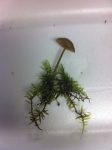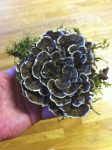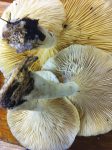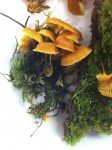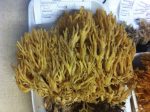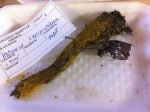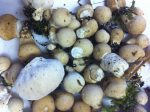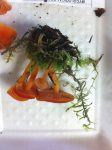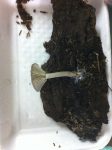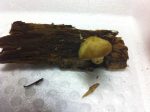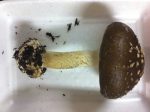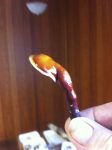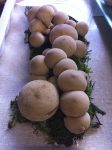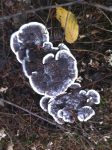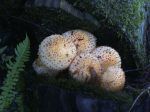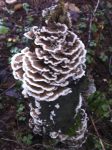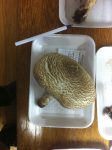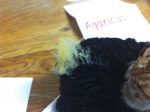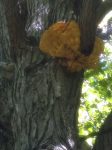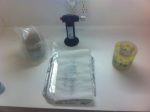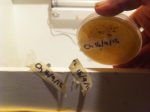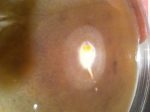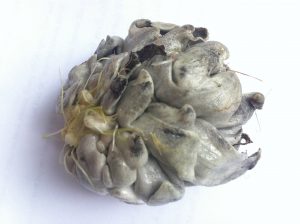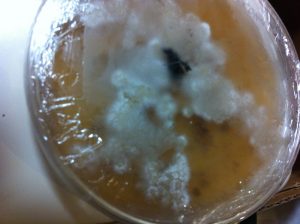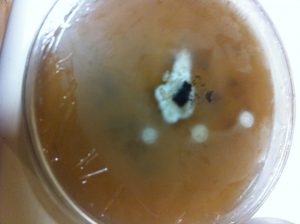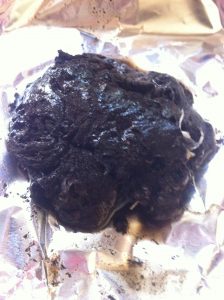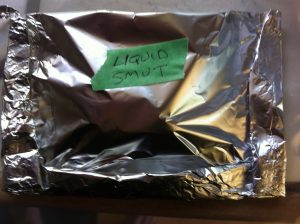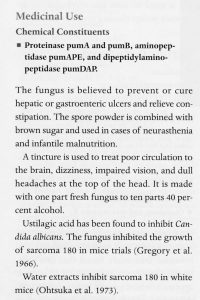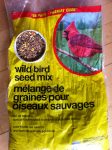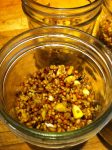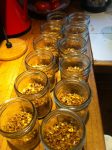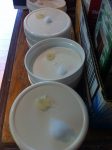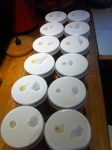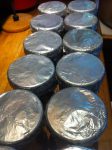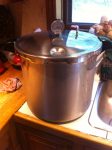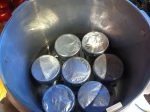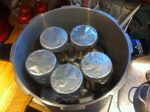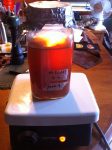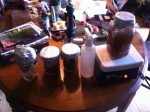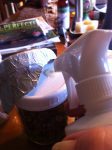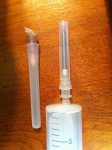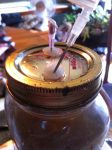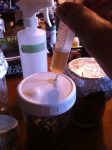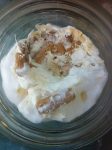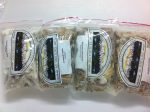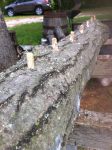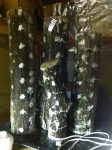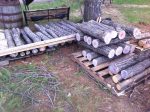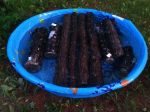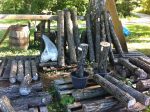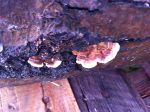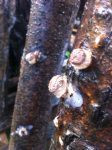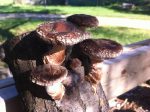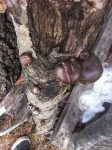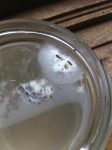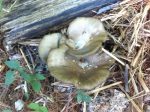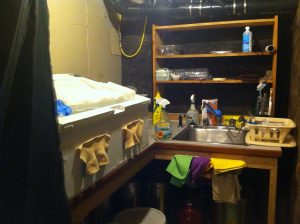 I have my “lab”, incubation space and fruiting chamber down in the basement. It’s a pretty simple set-up and I feel I am about to outgrow it, but here are some pics of the current state of it. If I make improvements I post them.
I have my “lab”, incubation space and fruiting chamber down in the basement. It’s a pretty simple set-up and I feel I am about to outgrow it, but here are some pics of the current state of it. If I make improvements I post them.
The lab where i do my sterile work (ie. mostly stuff involving petri dishes with agar) is in a corner of the basement to avoid air currents. The space was originally set-up as a home brewing/wine making space, so there is a sink with a bottle washer! I use a still air box or “glove box” to make the transfers. The box was built by a good friend and fellow mushroom lover. Using a popular design, there are lots of variations, some people use a large clear tub.
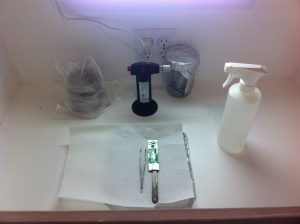 I added an electrical outlet and florescent light. I’ve thought about putting a strong UV light in there to sterilize the box between uses, I’ll have to look into the specs for that. Ultimately I will build a Laminar Flow Hood for this kind of work. There are lots of plans out there. Put your glovebox at the right height, mine is too low and I have to bend over to reach the back of the box. Some day I will raise it 6 or 8 inches or so .
I added an electrical outlet and florescent light. I’ve thought about putting a strong UV light in there to sterilize the box between uses, I’ll have to look into the specs for that. Ultimately I will build a Laminar Flow Hood for this kind of work. There are lots of plans out there. Put your glovebox at the right height, mine is too low and I have to bend over to reach the back of the box. Some day I will raise it 6 or 8 inches or so .
The light is turned on first, then the box is cleaned and sprayed with bleach solution. Everything needed for the procedure is wiped down with alcohol and put in the box. In this case, petri dishes with nutrified agar, butane torch, needles and syringes, alcohol spritzer, scalpel and tweezers. Mist the air in the box again with bleach as you close it. Let it sit for a while to settle.
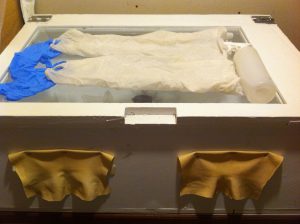 This space is used for cloning mushrooms to agar, and transfers of: spores to agar, myceliated agar to Liquid Culture (LC) media, agar to agar, agar to sterilized grain, colonized grain to sterilized/supplemented bulk substrates like sawdust with wheat bran.
This space is used for cloning mushrooms to agar, and transfers of: spores to agar, myceliated agar to Liquid Culture (LC) media, agar to agar, agar to sterilized grain, colonized grain to sterilized/supplemented bulk substrates like sawdust with wheat bran.
Before working in the box I don a pair of Tyvek sleeves cut from a paint suit, thumb holes help keep them from sliding up when I put on some fresh gloves. The gloves get alcohol spray and wipe. Be extremely careful when using alcohol and flame in the same space. The gloves must be dry before sparking the torch. Never spray down the space with alcohol. Use Pinesol, bleach, or vinegar & hydrogen peroxide.
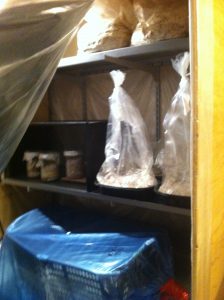 The dry gloved hands, fingers together and knuckles first go under the rubber curtains through the holes into the sterile space, other pre-serilized objects or tools can be passed through these holes but it should be avoided if possible, and the lid should not be opened before you are finished.
The dry gloved hands, fingers together and knuckles first go under the rubber curtains through the holes into the sterile space, other pre-serilized objects or tools can be passed through these holes but it should be avoided if possible, and the lid should not be opened before you are finished.
Planning is key to getting everything ready for the sterile transfers, which must be done as swiftly and efficiently as possible. None of the tools, media, or fungi can touch any surface or they must be re-sterilized. Maybe more on these procedures later.
Inoculated media are put in the incubator, which is in my case just three pieces of plywood making a box on the counter with some shelving a thermostat and heater. The space should be warm, about 28C for most species. the humidity is not curcial as the containers incubated in here are generally sealed. A proper incubation room would probably have humidity control.
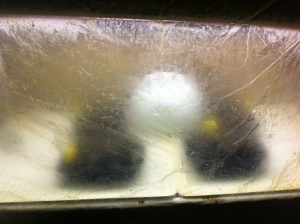 Lastly we come to the fruiting chamber currently a seedling germination tented greenhouse shelf thingie in another part of the basement which I try to keep around 18C. A small humidifier tries to keep the humidity around +95%
Lastly we come to the fruiting chamber currently a seedling germination tented greenhouse shelf thingie in another part of the basement which I try to keep around 18C. A small humidifier tries to keep the humidity around +95%
This is the weak link in the chain. It’s hard to maintain the temp/humidity/CO2 content and keep out fungus gnats (yuk). Each mushroom requires different and very specific conditions. Plans are for converting an old shower stall into a more air tight cabinet.
Sometimes, if the weather is just right, it’s better to just to take them to humid shady spot outside and let nature take its course.
